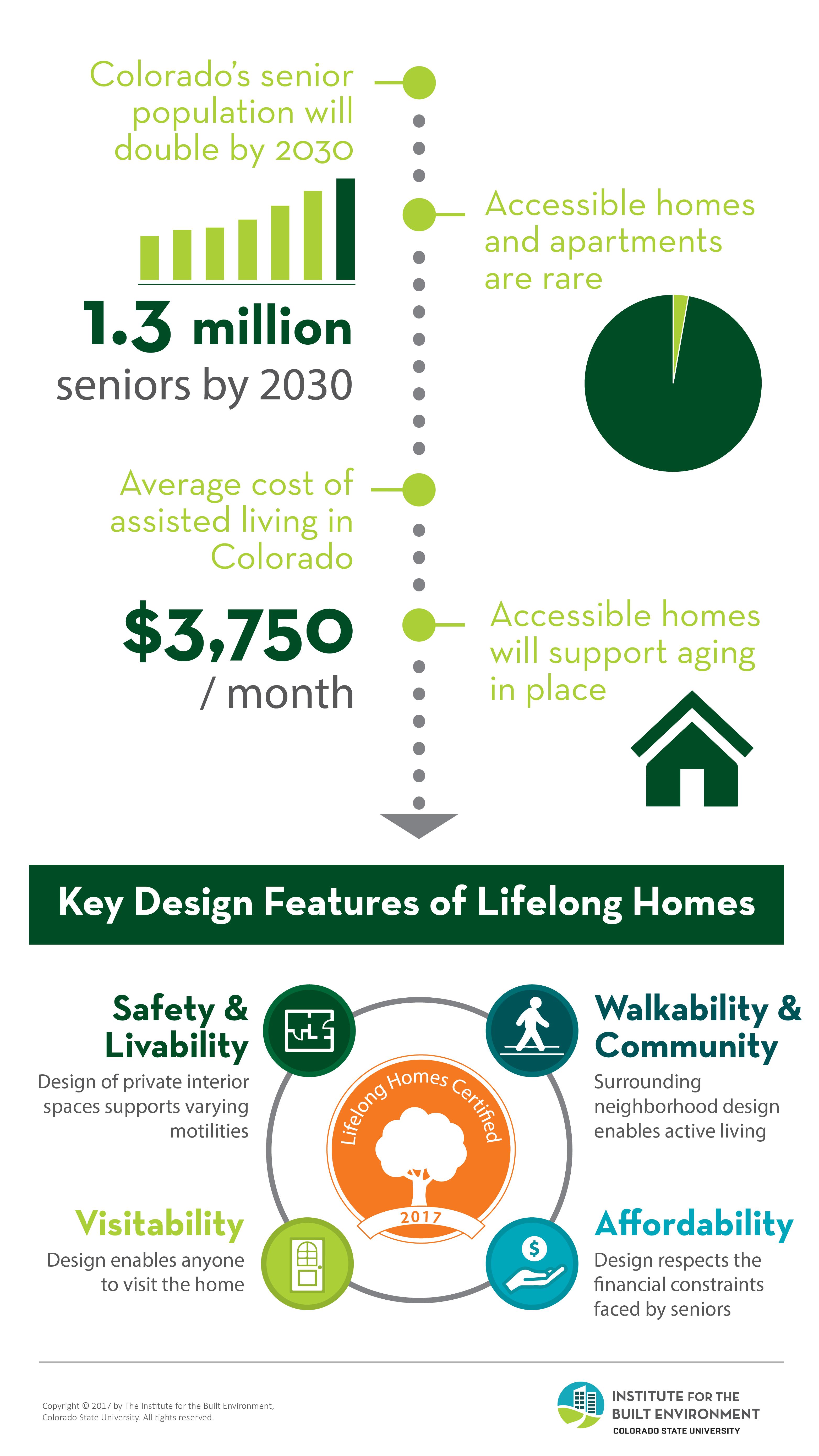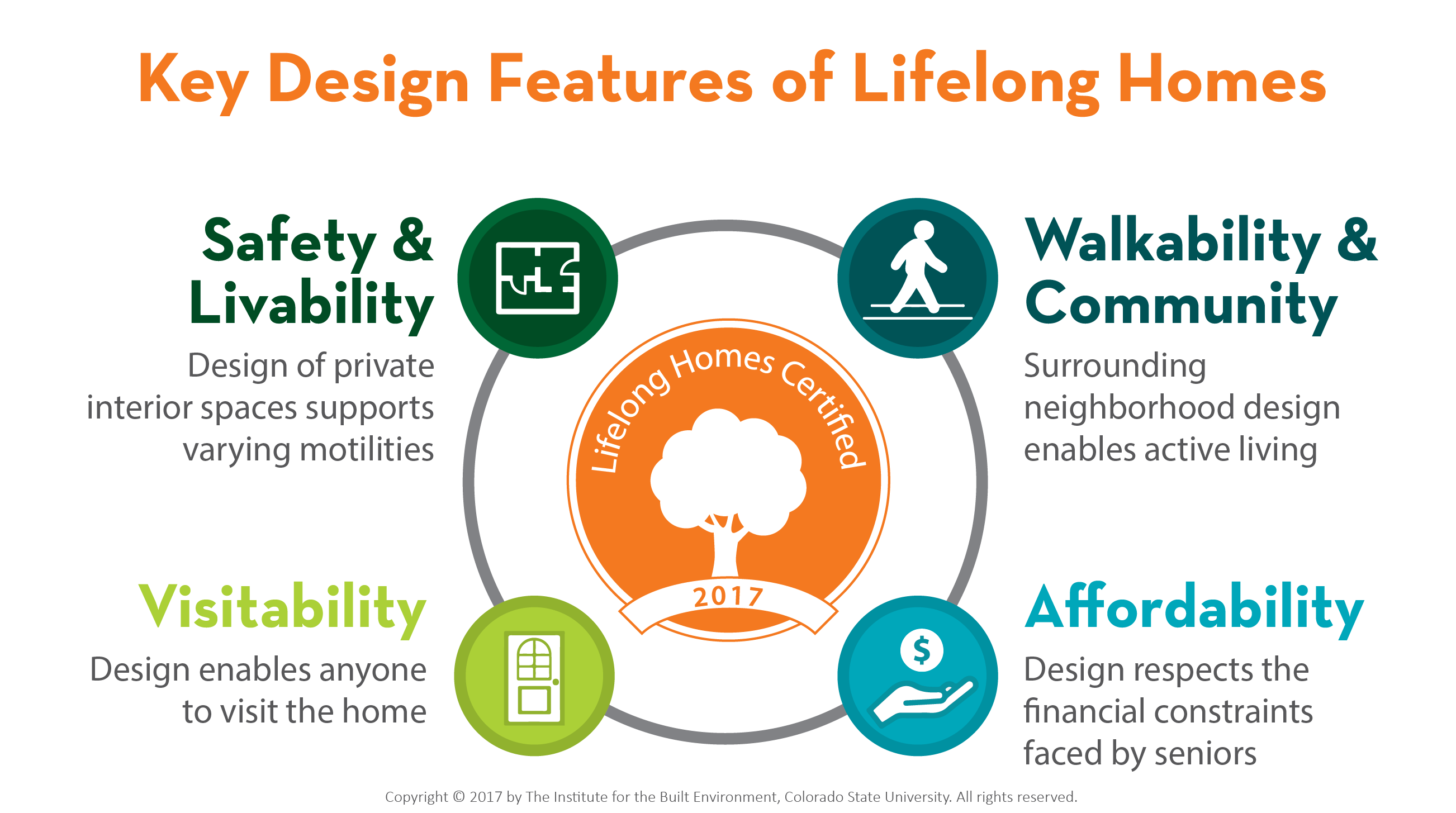Our population of older adults in Colorado is estimated to double by 2030. We need to talk about housing.

The United States is aging and in our home state of Colorado, from 2010 to 2040, the population of people over the age of 65 will grow more than twice as fast as the population at large.
Most homes are not built using universal design principles—which support usability by people of all ages and abilities—and therefore do not support aging in place. And though multi-family apartment buildings are required to have accessible public spaces, federal ADA requirements do not require that multi-family buildings include accessible units. These requirements also don’t apply to single-family homes. Therefore, accessible homes in Colorado are very rare in the marketplace.
Ideally, older adults would be able to stay in their homes as long as possible before moving to assisted living facilities, but many will need to leave prematurely due to mobility issues. Assisted living facilities are expensive, averaging about $3,750 a month in Colorado. Living in these facilities quickly decreases seniors’ savings and independence. When seniors can remain independent, they are more likely to live active, healthier, and longer lives.
We need to build housing that provides a lifetime home.
So, what would it look like to build more homes that could support our aging demographic? In addition, how would these homes support other seasons of life, such as young families, or those with disabilities?
The design needs for lifelong housing are fairly straightforward, and some of the primary design strategies can be described in four major themes:
- Visitability: Design enables anyone to visit the home
- A zero step entry, or an entry with very few, well-spaced steps that can quickly be retrofitted with a ramp if needed
- Wider front door and main area doors
- Accessible guest bathroom
- Safety & Livability: Design of private interior spaces supports varying motilities
- Master bedroom on the first floor
- Accessible master bathroom with additional studs in the wall to support grab bar install if needed
- Bars and levers instead of twist knobs on doors and cabinetry
- Walkability & Community: Surrounding neighborhood design enables active living
- Access to services—such as food, medical, and transportation—near the home
- Safe, accessible, and walkable streets and paths
- Connection to culture and social spaces
- Affordability: Home design respects the financial constraints faced by seniors
- Long-term affordability, including ease of maintenance, and energy and water efficiency
Though most of these features aren’t difficult to implement, they are rarely requested by homebuyers. As a result, developers don’t include them in the design of new homes. When you are 30 years old and buying your first home, you don’t think of these things.
A simple home certification makes a lot of sense.

Many Colorado communities are becoming aware of the need for lifelong housing and are looking for strategies to incentivize the market. The Larimer County Partnership for Age Friendly Communities released a five-year plan in August that summarizes the needs of Larimer County and an action plan for programs and policy. As well, the governor’s Strategic Action Planning Group on Aging released a report last year of key recommendations for the state of Colorado. Finally, many large municipalities in Colorado have started evaluating codes that reinforce visitability in new single-family home developments and allow infill projects like “granny flats” in existing neighborhoods.
Carrot vs. Stick
It’s important to have some municipal codes to spur the market forward. However, a carrot incentive such as a certification might help move the market faster.
A design verification program will reward Lifelong Homes by giving them a seal of approval that can be used by builders to market homes and by consumers to find appropriate homes.
Certification programs (for example, LEED and Energy Star) have proven to be successful tools for market transformation. They bring awareness to an issue, educate consumers about their options, and provide a tool for businesses to differentiate their products. Certifications also provide greater clarity to the marketplace by defining requirements, and they elicit trust through third-party verification.
A Lifelong Home Certification will advance the housing industry and educate design, construction, and real estate professionals; encourage housing that enables seniors to live at home longer, reducing their personal expenses and the risk that they will become dependent on government services; and, empower and educate seniors on how they can have a healthy, thriving future at home.
At the Institute for the Built Environment at Colorado State University, we are working to advance research and industry practices to support our aging population.
Colorado State University is a national leader in the research and application of biological, cognitive, psychological, social, and behavioral factors that lead to healthy and successful aging.
The Institute for the Built Environment is uniquely positioned to collaborate with the community and university researchers to advance a state-wide initiative on lifelong housing. We are well connected to local community groups, like the Partnership for Age-friendly Communities in Larimer County, and on-campus groups like CSU’s Columbine Health Systems Center for Healthy Aging. With the help of our Aging & Public Health fellow, Raina Benford, we are currently pursuing grants to advance this initiative and to develop the certification program, perform advocacy, do community outreach, and conduct research. Learn more about our Lifelong Housing initiative here.
